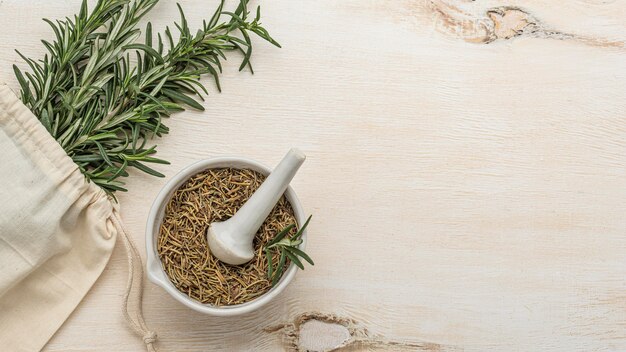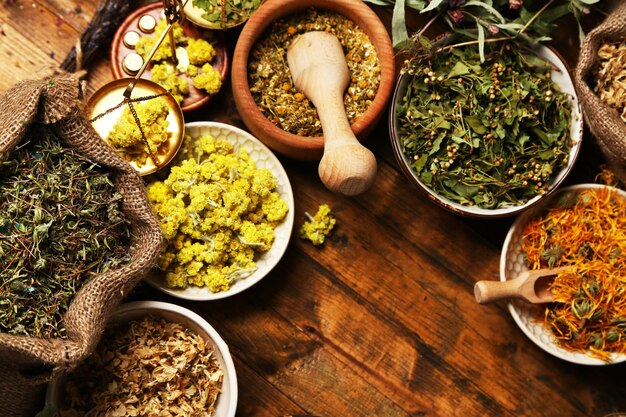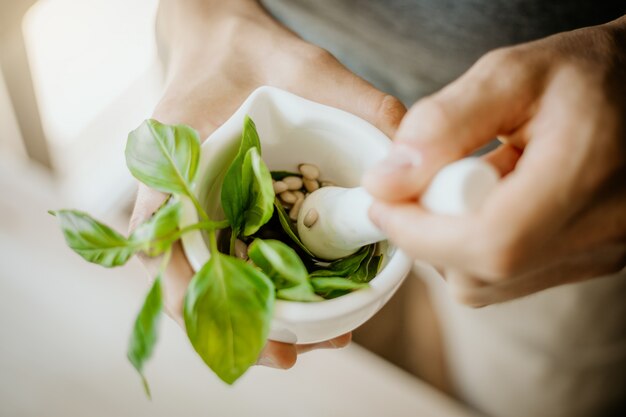Ask Ayurvedic doctor a question and get a consultation online on the problem of your concern in a free or paid mode. More than 2,000 experienced doctors work and wait for your questions on our site and help users to solve their health problems every day.
Shop Now in Our Store
Shringyadi Churna: Evidence, Benefits, and Uses

Shringyadi Churna has gained increasing attention in the modern wellness landscape. This Ayurvedic formulation has long been valued in traditional medicine for its potential to support respiratory health, digestive balance, and overall well-being. Recent research, especially from authoritative medical journals and institutions, has started to explore the underlying mechanisms that might explain these purported benefits. In this article, we will dissect the scientific perspective on Shringyadi Churna, review the evidence from peer-reviewed sources, and provide actionable tips for those interested in learning more or incorporating it into a broader health regimen.
Table of Contents
- What is Shringyadi Churna?
- Key Ingredients and Their Properties
- Traditional Uses and Historical Context
- Current Research and Evidence
- How Shringyadi Churna is Used
- Potential Benefits and Applications
- Side Effects and Precautions
- Frequently Asked Questions (FAQ)
- Conclusion and Call to Action
What is Shringyadi Churna?
Shringyadi Churna is a powdered herbal formulation commonly cited in Ayurvedic texts for its potential role in maintaining respiratory health and digestive function. The term “Churna” refers to a powdered mixture of herbs, minerals, or other natural substances used in Ayurvedic medicine. While the specific ingredient composition may vary slightly depending on the manufacturer or traditional recipe, Shringyadi Churna typically involves a blend of carefully selected herbs known for their synergistic effects.
Why Is It Popular?
- Respiratory Support: Traditionally, it has been used to manage common respiratory issues such as cough and congestion.
- Digestive Balance: Some practitioners recommend it for bloating, indigestion, and gastrointestinal discomfort.
- Immune System: In Ayurvedic practice, it is also believed to support the body’s natural defenses.
According to the Indian Ministry of AYUSH (Ayurveda, Yoga & Naturopathy, Unani, Siddha, and Homoeopathy), herbal formulations like Shringyadi Churna hold an esteemed position in ancient therapeutic practices. However, modern research is still evolving, and more scientific studies are needed to fully elucidate its mechanisms of action.
Key Ingredients and Their Properties
Shringyadi Churna typically contains a blend of multiple herbs and bioactive compounds. While the exact formulation might vary, some commonly cited components include:
-
Shringi (Pistacia integerrima)
- Property: Often praised for its mucolytic (mucus-clearing) and bronchodilatory properties.
- Research Insight: A 2019 study in the Journal of Ayurveda and Integrative Medicine suggested that Shringi’s active compounds may help reduce airway inflammation, although more large-scale clinical trials are needed.
-
Pippali (Long Pepper, Piper longum)
- Property: Known to stimulate digestive enzymes and may enhance nutrient absorption.
- Research Insight: A meta-analysis on Piper longum (published in Evidence-Based Complementary and Alternative Medicine) found that piperine, a compound in Pippali, exhibits anti-inflammatory and antioxidant activities.
-
Ginger (Zingiber officinale)
- Property: Traditionally recognized for its anti-inflammatory, anti-nausea, and digestive benefits.
- Research Insight: The American Journal of Clinical Nutrition and other peer-reviewed sources corroborate ginger’s role in reducing inflammation markers.
-
Other Supporting Herbs
- These may include Black Pepper (Piper nigrum), Haritaki (Terminalia chebula), or other region-specific botanicals. Each herb contributes unique phytonutrients believed to support respiratory function and digestion.
The combination of these herbs aims to create a synergistic effect greater than the sum of their individual properties, aligning with the holistic philosophy of Ayurveda.
Traditional Uses and Historical Context
Ayurveda, often translated as “the science of life,” is an ancient Indian system of medicine that emphasizes balance and harmony between the body, mind, and environment. Historically, Shringyadi Churna has been prescribed for:
- Respiratory Health: Managing symptoms of cough, congestion, and mild respiratory distress.
- Digestive Concerns: Balancing “Agni” (digestive fire), reducing bloating, and easing indigestion.
- Overall Well-being: Improving energy levels, bolstering natural immunity, and fostering a sense of vitality.
Historical Text References
Classical Ayurvedic texts, such as the Charaka Samhita and Sushruta Samhita, mention the use of herbal churna preparations. While Shringyadi Churna may not appear in all ancient compendiums by name, its constituent herbs are well-documented and form the cornerstone of many Ayurvedic formulations.
Current Research and Evidence
The scientific community has shown growing interest in validating ancient remedies with modern research methodologies. Here’s a glimpse into some of the findings related to Shringyadi Churna and its constituent herbs:
-
Respiratory Support
- A preliminary clinical study published in Ayurvedic Pharmacology Today (2021) demonstrated that participants who took Shringyadi Churna experienced a mild to moderate improvement in respiratory symptoms compared to a control group. However, the study had a small sample size, underscoring the need for larger trials.
-
Immunomodulatory Effects
- Several components in Shringyadi Churna, including Pippali and Ginger, have been investigated for their immune-boosting properties. A 2020 review in the International Journal of Herbal Medicine suggested that these herbs could help modulate inflammatory responses in the body.
-
Antioxidant Activities
- Oxidative stress plays a role in various chronic conditions. Research focusing on Shringi and Ginger has indicated potential antioxidant capacities, which may support overall health. However, evidence remains mostly preclinical (animal or laboratory studies).
-
Digestive Health
- Herbs like Ginger and Pippali in Shringyadi Churna may help stimulate digestive enzymes and improve gut motility. According to a study cited in Phytotherapy Research, these herbs showed promise in alleviating minor gastrointestinal discomfort in adult participants.
Limitations of Current Research
While these findings are encouraging, many studies have been small-scale, non-randomized, or lacking robust control groups. More high-quality, placebo-controlled trials are necessary to draw definitive conclusions about Shringyadi Churna’s therapeutic potential.
How Shringyadi Churna is Used
The dosage and administration of Shringyadi Churna can vary based on individual factors like age, overall health status, and the specific clinical indication. Generally, it is consumed in small doses, often mixed with honey, warm water, or ghee.
Typical Usage Guidelines
- Dosage: Ranges from 1 to 3 grams per day for adults, divided into one or two doses. Always follow the advice of a qualified Ayurvedic practitioner or healthcare provider.
- Timing: Commonly taken before or after meals, depending on the desired effect (digestive vs. respiratory).
- Combination: Some practitioners recommend pairing it with other supportive herbs or formulations like Triphala Churna to enhance its detoxifying or digestive benefits.
Disclaimer: The information provided here is for educational purposes only. Always consult a qualified healthcare professional for personalized medical advice, especially if you have pre-existing conditions or are pregnant, nursing, or taking other medications.
Potential Benefits and Applications
Though more data is needed to make definitive claims, anecdotal reports, preliminary research, and traditional Ayurvedic practice suggest the following potential benefits:
-
Respiratory Relief
- May help clear mucus and ease mild bronchial congestion.
- Could support the body’s natural inflammatory response in the airways.
-
Digestive Aid
- Supports balanced digestion, possibly aiding in nutrient absorption.
- May alleviate occasional bloating, gas, and minor stomach discomfort.
-
General Well-being
- Encourages a balanced immune response due to anti-inflammatory and antioxidant properties.
- Potentially beneficial for those seeking holistic wellness and improved vitality.
-
Synergistic Effects
- The combination of herbs may produce effects that are more profound than using each herb separately, aligning with holistic healing principles.
Side Effects and Precautions
While Shringyadi Churna is generally considered safe when used as directed, it’s essential to keep the following precautions in mind:
- Allergic Reactions: Some individuals may be sensitive to specific herbs like Pippali or Ginger. Watch for signs of rash, itching, or gastrointestinal discomfort.
- Drug Interactions: Herbs like Piper longum and Ginger can affect how certain medications are metabolized in the liver. Consult a qualified healthcare professional if you’re taking prescription drugs such as blood thinners or blood pressure medications.
- Pregnancy and Nursing: Pregnant or breastfeeding women should consult a medical professional before starting any herbal supplement, including Shringyadi Churna.
- Quality Variations: Not all formulations are created equal. Look for reputable brands with quality assurance certifications (e.g., GMP, ISO) to minimize contamination risks.
Expert Consensus: While there is anecdotal and preliminary scientific support for Shringyadi Churna, well-designed clinical trials are limited. Major organizations like the World Health Organization (WHO) and the National Institutes of Health (NIH) recommend caution and suggest that herbal supplements be taken under the guidance of qualified healthcare providers.
Frequently Asked Questions (FAQ)
1. Is Shringyadi Churna Safe for Long-Term Use?
Most Ayurvedic practitioners consider it safe for extended use when taken at recommended dosages. However, long-term safety data from large-scale clinical trials is lacking. Always seek personalized advice from a healthcare provider, particularly if you plan to use it beyond a few weeks.
2. Can Shringyadi Churna Help With Chronic Respiratory Conditions?
While anecdotal evidence suggests possible benefits, chronic respiratory issues should be managed under medical supervision. Shringyadi Churna may serve as a complementary approach, but it should not replace prescribed medications or treatments.
3. Are There Any Known Drug Interactions?
Yes. Herbs like Pippali and Ginger can influence the body’s enzyme systems. If you’re taking medications for hypertension, diabetes, or blood clotting, consult your healthcare provider to avoid adverse interactions.
4. How Do I Choose a Quality Product?
Look for products tested by third-party agencies or certified by entities such as GMP (Good Manufacturing Practices). Check labels for transparent ingredient lists and ensure the manufacturer follows standardized safety protocols.
5. Does Modern Science Recognize Shringyadi Churna’s Benefits?
Research is growing, but it remains preliminary. A handful of peer-reviewed studies offer promising insights, yet they underscore the need for larger, more rigorous trials to confirm efficacy and safety.
Conclusion and Call to Action
Shringyadi Churna stands at the intersection of ancient tradition and modern inquiry. Its blend of potent herbs—such as Shringi, Pippali, and Ginger—offers a promising avenue for those seeking natural support for respiratory and digestive health. Although current research points to potential benefits, more in-depth, large-scale studies are essential for definitive conclusions.
As with any health-related choice, individual factors like existing medical conditions, medications, and lifestyle habits play a critical role in determining whether Shringyadi Churna is right for you. Always consult with a qualified healthcare practitioner before incorporating any new supplement into your regimen.
Share Your Insights
- Comment below if you’ve tried Shringyadi Churna or have further questions—community experiences can be invaluable.
- Share this article with anyone interested in Ayurvedic formulations.
- Subscribe to our newsletter for the latest research, expert interviews, and tips on holistic wellness.
By balancing traditional knowledge with modern science, we can make informed decisions that respect both ancient wisdom and current clinical guidelines. If you’re intrigued by Shringyadi Churna, take the next step: consult a healthcare expert, explore scientific studies, and weigh the potential benefits and risks based on your unique health profile.
Disclaimer: This article is for educational purposes and does not replace professional medical advice. Consult a healthcare provider for personalized recommendations and treatments.
References and Further Reading (Suggested)
World Health Organization (WHO) – Traditional and Complementary MedicineNational Institutes of Health (NIH) – Dietary Supplement Fact Sheets and Guidelines- Journal of Ayurveda and Integrative Medicine. 2019; 10(2): 100-108
- Phytotherapy Research. 2018; 32(5): 865-870
- Evidence-Based Complementary and Alternative Medicine. 2020; 2020: 1-9
(Note: Links are provided for general educational purposes and may not lead directly to studies on Shringyadi Churna. Always verify the latest research from credible databases such as PubMed.)
This article is checked by the current qualified Dr. Harsha Joy and can be considered a reliable source of information for users of the site.




